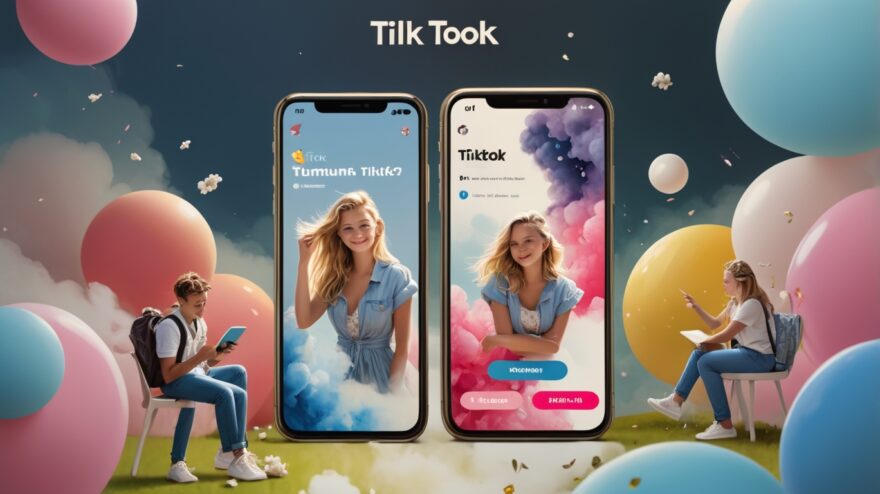TikTok, the wildly popular video-sharing app, is once again at the center of a heated debate in the United States. With over a third of Americans actively using the platform[1], the app’s future hangs in the balance as the Supreme Court prepares to make a crucial decision.
The Legal Battle
On January 10, the Supreme Court heard arguments regarding a federal law that could either ban TikTok in the US or force its Chinese parent company, Byte Dance, to sell the platform to a non-Chinese entity[1]. This law, passed last year, aims to address national security concerns by preventing potential data access by the Chinese government. However, TikTok and its supporters argue that the law violates free speech rights and lacks concrete evidence of any misuse of data.
Potential Outcomes
If the Supreme Court upholds the law, TikTok could face an imminent shutdown in the US. This would involve removing the app from Apple and Google app stores, preventing new downloads. Existing users might still access the app, but without updates, the app’s quality and security could deteriorate over time. Alternatively, ByteDance might sell TikTok’s US operations to a non-Chinese company, ensuring the app’s continued availability.
The Impact on Users and Creators
For millions of American users and content creators, TikTok is more than just an app—it’s a platform for creativity, entertainment, and livelihood. A ban could force creators to migrate to other platforms like Instagram Reels, YouTube Shorts, or even Elon Musk’s X, which aims to incorporate more video content. This shift could significantly impact the digital landscape and the way users consume content.
TikTok by the Numbers
- 102 million users: In 2023, TikTok had approximately 102 million users in the United States[1].
- 107.8 million users: This figure is projected to increase to 107.8 million users in 2024[1].
- 150 million active monthly users: As of 2024, TikTok boasts 150 million active monthly users in the US[2].
- 62% of adults under 30: 62% of U.S. adults under 30 use TikTok, compared to 39% of those aged 30 to 49, 24% of those aged 50 to 64, and 10% of those aged 65 and older.
- 1.5 hours daily: The average TikTok user spends more than 1.5 hours each day on the app[2].
TikTok’s Revenue Model
TikTok’s revenue model is multifaceted, primarily driven by:
- Advertisements: TikTok offers various advertising options, including in-feed ads, branded hashtag challenges, and branded effects. These ads allow businesses to reach a vast audience, leveraging TikTok’s highly engaged user base[1].
- In-App Purchases: Users can purchase virtual coins, which they can use to buy gifts for their favorite creators during live streams. This feature not only enhances user engagement but also provides a revenue stream for both TikTok and its creators[1].
- Shop Commissions: TikTok has integrated e-commerce features, allowing users to shop directly from the app. The platform earns commissions from sales made through these shopping features[3].
- LIVE Subscription: TikTok offers a subscription service for live streaming, where users can subscribe to their favorite creators for exclusive content and perks. This subscription model provides a steady revenue stream[3].
- Royalties: TikTok pays royalties to music artists and labels for the use of their music in videos. This model ensures that creators have access to a vast library of music while supporting the music industry[3].
TikTok’s Impact on Small Businesses
TikTok has become a vital tool for small businesses, offering a unique platform to reach a broader audience and engage with potential customers in creative ways. Here are some key impacts:
- Increased Visibility: Small businesses can create engaging content that goes viral, significantly increasing their visibility. This organic reach is often more effective and affordable than traditional advertising[4].
- Direct Sales: With TikTok’s e-commerce features, businesses can sell products directly through the app. This seamless integration of content and commerce helps drive sales and provides a convenient shopping experience for users[4].
- Community Building: TikTok allows businesses to build a community around their brand. By engaging with followers through comments, live streams, and interactive content, businesses can foster loyalty and create a strong brand presence[4].
- Cost-Effective Marketing: TikTok’s advertising options are often more affordable than other platforms, making it accessible for small businesses with limited marketing budgets. The ability to target specific demographics also ensures that marketing efforts are more effective[4].
- Economic Impact: According to a report by Oxford Economics, TikTok generated $14.7 billion for small- to mid-size businesses (SMBs) in 2023, with an additional $24.2 billion in total economic activity. The platform supported over 224,000 jobs in the US through small business activity[4].
The Broader Implications
The TikTok saga highlights the ongoing tension between national security and free speech in the digital age. As the Supreme Court deliberates, the outcome will not only affect TikTok’s future but also set a precedent for how similar cases might be handled in the future.
Stay tuned as we await the Supreme Court’s decision, which could reshape the social media landscape in the United States.
What are your thoughts on the potential TikTok ban? How do you think it will impact your social media experience? Let us know in the comments below!
References
[1] How Banning TikTok Will Impact Small Businesses
[2] How a TikTok ban could impact small business owners in Idaho

3 thoughts on “TikTok’s Tumultuous Journey: What’s Next for the Popular App in the US?”